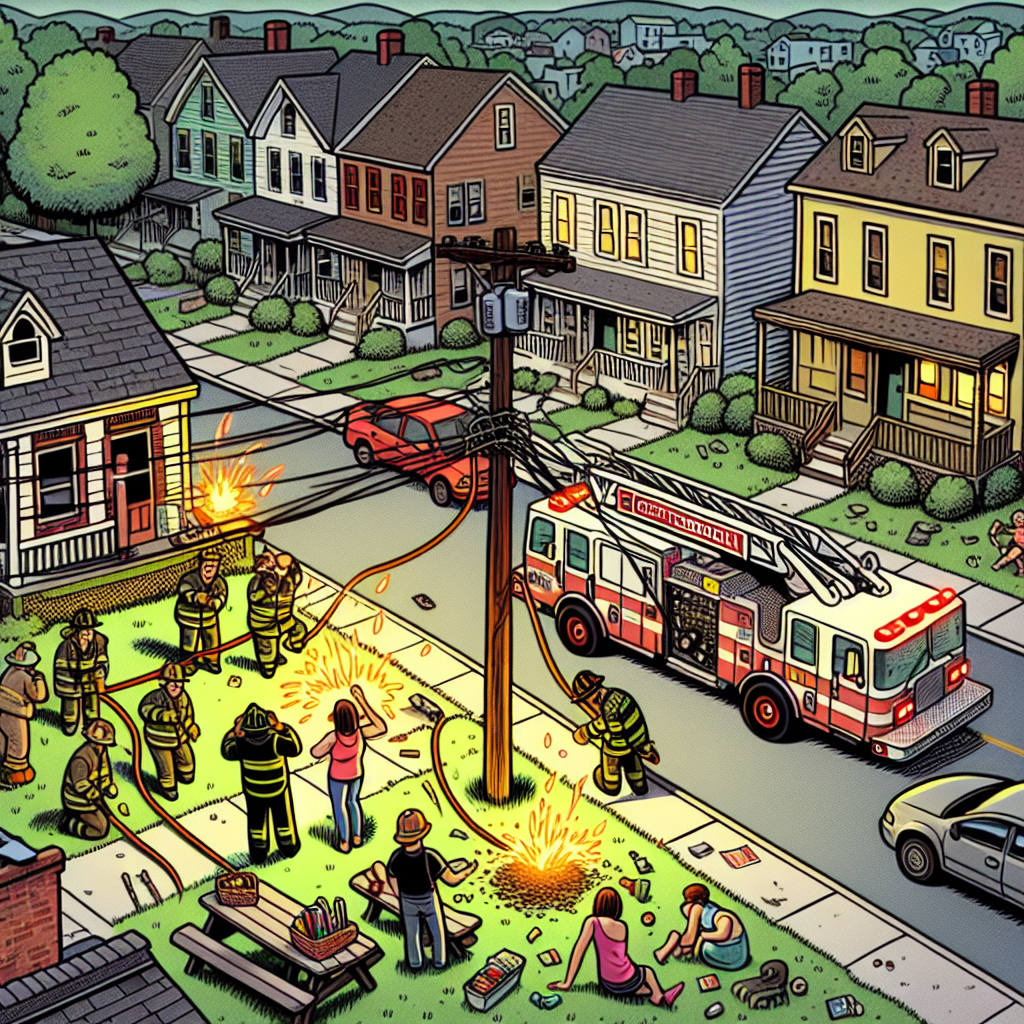“Chesterburgh’s Electrical Grid Crisis: Aging Infrastructure, Budget Cuts, and Rising Risks”

At precisely 07:43 on the morning of April 12, Chesterburgh’s 911 dispatch center received its first alarm of the day. The call came from Elm Street, near the junction with Route 17, reporting a downed power line sparking a small fire. Within minutes, crews from Chesterburgh Fire Department were on scene, extinguishing the flames and cordoning off the area. For most residents, it was a routine incident. For those watching closer, it was yet another flicker in the larger, more troubling picture of the town’s electrical grid reliability.
Over the past six months, Chesterburgh has seen a significant uptick in electrical failures, outages, and equipment malfunctions. According to records obtained from the municipal Public Utilities Office, there were 43 power interruptions reported between October 2023 and March 2024, compared to 18 during the same period the previous year. The uptick is not subtle, nor is it easily explained by weather incidents; the majority of the failures cite "equipment degradation" or "maintenance delays" as primary causes.
Yet, the root causes appear to be less a matter of aging hardware and more a consequence of budget shortfalls and a tangled management structure. Chesterburgh’s annual budget allocation for electrical infrastructure maintenance has dropped 22% since 2021, as city council priorities shifted towards other public projects. Meetings and minutes from the past year reveal repeated warnings from the Public Utilities Director, Mark Hammel, stressing the need for immediate investments in replacement transformers and grid monitoring technology. His recommendations were met with resistance, budget cuts, or postponed deliberations.
The dissonance became stark during a city council session on February 15, 2024, when Councilwoman Linda Reyes vocally opposed a proposed $2.3 million reallocation for grid upgrades, citing competing needs such as road repairs and the new community center. “We can’t pour money into an electrical grid and ignore the potholes that swallow our cars,” she stated at 14:32 during the public hearing. The budget was ultimately trimmed, funding for electrical maintenance reduced from last year’s $5.1 million to $4.0 million.
In a follow-up interview on March 3, Hammel summed up the situation bluntly. "The system is holding together with patchwork fixes, and that won’t be enough much longer," he told me, voice grim. “Our backup transformers have surpassed their expected lifespan by nearly five years. We’re one major failure away from widespread outages.”
Residents on the west side of town are already feeling the consequences. Between January and March, the neighborhood bounded by Maple Avenue and Vine Street experienced five separate blackouts lasting between 45 minutes and two hours. Local pharmacy owner Rick D’Angelo has had to discard thousands of dollars in refrigerated medications due to temperature fluctuations caused by the outages. “It’s not just inconvenience. It’s loss of business and trust,” D’Angelo explained during a brief conversation outside his store on March 15 at 10:07.
Emergency services are not immune. Chesterburgh’s 911 system relies on a combination of electrical power and backup generators. During a blackout on March 11, a routine power failure lasted 118 minutes. While generators kicked in, several emergency calls reported delays of up to ten minutes due to switchovers and equipment resets. Deputy Fire Chief Harold Simons confirmed to me on April 8 at 16:22 that these delays, while within operational thresholds, represent a risk that could escalate with further grid degradation.
Compounding the problem is a growing workforce shortage within the utility’s maintenance department. Human Resources data indicate a 15% vacancy rate among linemen and technicians, with several experienced employees retiring or leaving for higher-paying roles in neighboring counties. Internal emails from January obtained u
